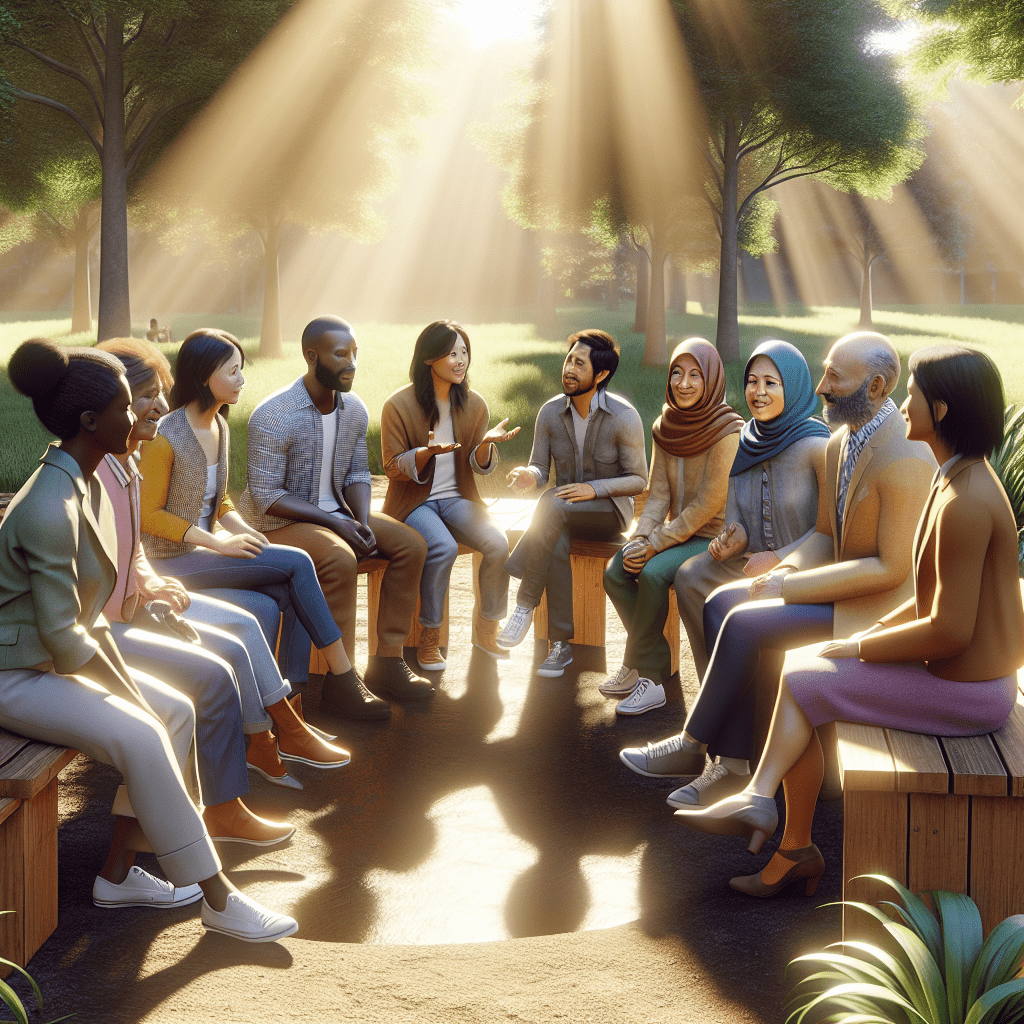What is an example of a neurodiverse person?
Have you ever wondered what it means to be neurodiverse? The term itself might seem a bit perplexing. But understanding neurodiversity is essential because it sheds light on various perspectives and experiences. Essentially, neurodiversity recognizes that neurological differences are a natural part of human diversity, much like variations in ethnicity or culture. You’ll often hear terms like autism, ADHD (Attention Deficit Hyperactivity Disorder), dyslexia, and others categorized under this broad umbrella. So, what is an example of a neurodiverse person? Let’s dive deeper and explore this fascinating subject.
Understanding Neurodiversity
To better understand what is an example of a neurodiverse person, we first need to grasp the concept of neurodiversity itself. Neurodiversity primarily points to the idea that the human brain can function in various ways, and each method of thinking, feeling, and experiencing the world has its own value. Whether someone is neurotypical—meaning their cognitive function and behaviors are considered the standard—or neurodiverse, every individual brings something unique to the table.
Neurodiversity includes various conditions such as autism spectrum disorder (ASD), ADHD, dyslexia, dyspraxia, and more. Each of these comes with distinct characteristics, strengths, and challenges. For instance, a person with ASD might have an extraordinary ability to focus on details, often excelling in fields that require precision and analytical skills. In contrast, someone with ADHD may display high energy levels and creativity, approaching problems with a unique perspective that fosters innovative solutions.
It’s crucial to recognize that being neurodiverse doesn’t imply being disabled. Instead, it offers a different lens through which to view the world. For example, many workplaces are now acknowledging neurodiversity, creating environments that cater to different cognitive styles, thereby enhancing productivity and creativity. By valuing neurodiversity, society is beginning to understand that everyone, regardless of their neurological makeup, can contribute positively to their communities.
Real-Life Examples of Neurodiverse Individuals
So, what is an example of a neurodiverse person? One prominent figure often cited is Temple Grandin, a well-known animal behaviorist and advocate for autism awareness. Temple was diagnosed with autism at a young age. Despite facing numerous challenges, she harnessed her unique way of thinking to revolutionize livestock handling practices. Through her insights, Temple highlighted the importance of viewing the world differently, benefiting both the animals and their handlers. She has written multiple books discussing her experiences and advocating for neurodiversity.
Another example is Simone Biles, a world-renowned gymnast who has openly discussed her ADHD. Rather than seeing this as a hindrance, she focuses on her strengths and how her unique neurological wiring can enhance her performance. Through her story, she motivates countless individuals to embrace their neurodiversity, showcasing that challenges can lead to exceptional achievements.
There are numerous less-publicized examples as well—many everyday individuals demonstrate neurodiversity in their lives. Consider the software developers and engineers who might have dyslexia but end up shaping technological advancements. Their unique cognitive processes often allow them to think outside the box and innovate in ways that others cannot. The legacy of these neurodiverse individuals illustrates the value of conflicting viewpoints and experiences.
Supporting Neurodiverse Individuals in Society
Recognizing what is an example of a neurodiverse person is essential, but that’s just half the story. The real challenge lies in fostering an inclusive environment for those who identify as neurodiverse. Society plays a pivotal role in determining the quality of life for neurodiverse individuals. The educational system is often the first stop where neurodiverse youths encounter support, or lack thereof. Teachers need to create tailored strategies and learning materials that resonate with various learning styles, enabling each student to thrive.
Imagine a classroom where students are not only celebrated for their achievements but also supported in their different approaches to learning. For instance, children with dyslexia may excel in hands-on tasks, while those with ADHD might require frequent breaks to manage their energy levels effectively. Adapting teaching methods can pave the way for greater success and inclusion, enabling students to feel valued and understood.
In the workplace, creating a supportive culture is equally important. Employers are beginning to recognize the talents that neurodiverse individuals offer—a fresh perspective on problem-solving, creativity, and innovation often flow from atypical ways of thinking. By offering accommodations, such as flexible working hours or quiet spaces for focused work, companies can harness the full potential of their diverse workforce.
Additionally, community programs that focus on awareness and acceptance of neurodiversity can foster inclusiveness. Workshops, training for employers, and discussions that promote understanding among peers can bridge the gap between neurotypical and neurodiverse individuals. Such initiatives amplify voices that need to be heard and can lead to transformative change in public perception.
Celebrating Neurodiversity in Popular Culture
Another fascinating aspect of neurodiversity is its representation in popular culture. This recognition plays an essential role in normalizing differences and inspiring acceptance. Films, television shows, and literature have begun to portray neurodiverse characters authentically, providing relatable representations that resonate with many individuals.
One of the most compelling examples can be seen in the character of Sheldon Cooper from the TV show ‘The Big Bang Theory.’ While the show never definitively diagnoses him, many fans interpret his behavior through the lens of autism. Sheldon’s reliance on routines, intense interests, and unique social interactions have sparked conversations around neurodiversity, making it a widely discussed topic among viewers.
Another noteworthy film, ‘Atypical,’ centers around a teenager on the autism spectrum navigating the challenges of adolescence. This series offers a candid look at the ups and downs individuals face while highlighting their strengths. Character development shows that neurodiverse individuals have complex experiences just like anyone else, which serves to humanize their narratives rather than pigeonhole them into static stereotypes.
Books such as ‘Fish in a Tree’ by Lynda Mullaly Hunt offer stories from the perspective of a dyslexic child, showcasing the struggles and triumphs they encounter in a school environment. By exposing young readers to neurodiversity, literature educates and encourages empathy, allowing children to understand and appreciate differences at an early age.
Conclusion
In exploring what is an example of a neurodiverse person, we embark on a journey that reveals the beauty of diverse cognitive landscapes. The stories of Temple Grandin, Simone Biles, and countless others demonstrate the immense potential held by neurodiverse individuals. They not only challenge our traditional ways of thinking but also enhance the world with their distinct perspectives. Recognizing and accepting neurodiversity is not just a matter of compassion—it’s a vital step towards building a more inclusive society.
By celebrating neurodiversity in our classrooms, workplaces, and culture, we can foster an environment where everyone is encouraged to thrive, share their gifts, and contribute to the community. The movement towards inclusiveness requires collective responsibility, awareness, and action. Embracing neurodiversity enhances the tapestry of human experience, allowing for richer dialogues and a deeper understanding of what it means to be truly human.
FAQs
1. What is neurodiversity?
Neurodiversity is the concept that neurological differences are to be recognized and respected as a natural form of human diversity. It encompasses various conditions such as autism, ADHD, and dyslexia.
2. How can I support neurodiverse individuals?
Support can come in various forms, such as creating inclusive environments in schools and workplaces, advocating for awareness, and providing accommodations tailored to individual needs.
3. Are neurodiverse individuals more likely to have unique talents?
Many neurodiverse individuals possess unique strengths and abilities. For example, people with autism might excel in areas requiring attention to detail, while those with ADHD may display high levels of creativity and innovation.
4. What should I consider when interacting with a neurodiverse person?
Be understanding and patient. Everyone has different communication styles, and being considerate can lead to better interactions and deeper connections.
5. Where can I find more information about neurodiversity?
Numerous organizations and resources provide information about neurodiversity. Websites such as the Neurodiversity Network and Autism Speaks offer valuable insights and support options.
Is it Autism or ADHD? Understanding the Differences and Similarities







